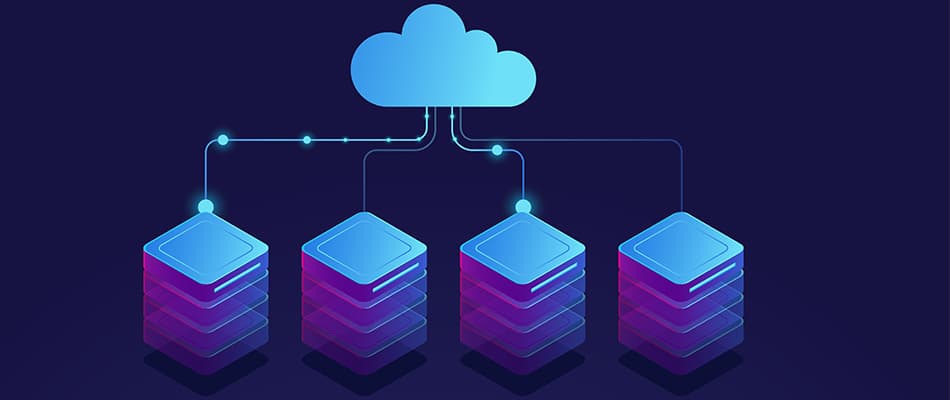What is Cluster in Cloud Computing? Know the Types & Functions!
A cluster in cloud computing is a group of interconnected computers, or “nodes,” that work as a single system. These nodes share resources such as processing power, memory, and storage to handle large tasks efficiently. Clusters are designed to work in parallel, distributing workloads in multiple machines. This increases computational power and performance.
Cloud computing uses clusters to improve scalability, reliability, and performance. They allow resources to be scaled up or down based on demand, ensuring efficient resource management. Clusters ensure high availability by shifting workloads between nodes during failures. This minimises downtime and keeps services operational. This makes them essential for handling large applications and maintaining continuous service in the cloud.
Read the article to learn more about what is a cluster in cloud computing, its importance, how it works and more.
What is Cluster in Cloud Computing?
In cloud computing, a cluster refers to different connected computers that work as one system. These computers, called nodes, share resources and communicate over a network like LAN or WAN. Cluster computing allows faster processing by splitting tasks among multiple nodes.
It also ensures high availability, as other nodes can take over if one fails. Clusters are used in cloud computing for data processing, AI, big data analytics, and research. They provide scalability, reliability, and efficiency. They also improve fault tolerance by preventing system downtime. With clusters, cloud providers can handle large applications and workloads more effectively.
Read our article on what are the risks of using cloud computing here

How does cluster computing work?
After knowing what is cluster in cloud computing, let us know how it works. Cluster computing connects multiple computers, or nodes, to act as one system. Each node shares resources like CPU and memory. Let us know more about how the cluster works in cloud computing below:
- Connecting Nodes: Cluster computing connects multiple computers, known as nodes, over a Local Area Network (LAN).
- Middleware Control: Each node is managed by middleware, which enables communication between the machines in the cluster.
- Unified Resource Pool: Users access the resources of all nodes as if they were a single system, not separate machines connected by a network.
- Scalability: A cluster can consist of as few as two nodes or scale to thousands, depending on the needs of the task.
- Beowulf Cluster: A Beowulf cluster connects commercial PCs via LAN, providing an affordable alternative to supercomputers for specific applications.
- Kubernetes Integration: Kubernetes, a container-related technology, supports clusters of up to 5,000 nodes. It is widely used in cloud computing for hybrid cloud, multi-cloud, and DevOps environments.
Know what is IAAS in cloud computing here
Importance of Clusters in Cloud Computing
After understanding what is cluster in cloud computing, let us learn the importance of clusters. Clusters are crucial in cloud computing to improve performance and reliability. They help manage large workloads and ensure high availability. By distributing tasks among multiple nodes, clusters improve scalability and fault tolerance. Here’s why they’re essential:
- Scalability: Clusters allow businesses to adjust resources based on demand and handle large workloads without performance slowdowns.
- High Availability: Failover clusters ensure minimal downtime by automatically shifting operations to backup servers if a failure occurs, ensuring continuous service.
- Enhanced Performance: High-performance computing (HPC) clusters can handle complex tasks like AI model training and big data analysis. HPC provides faster processing and better efficiency.
- Cost Efficiency: Clusters help optimise cloud costs by adjusting resources up or down as needed. It reduces wasted capacity and ensures businesses only pay for what they use.
- Support for Advanced Technologies: Clusters enable cutting-edge advancements, like quantum computing. As a result, it can help manage more complex tasks.
- Reliability: With multiple nodes working together, clusters improve system reliability by distributing workloads, preventing single points of failure.
Check what is load balancing in cloud computing here
Types of Clustering in Cloud Computing
In cloud computing, there are several types of clustering, each designed to meet specific needs. These types can often coexist in a system, which helps optimise performance. Below are the types of clustering in cloud computing.
- Fail-over or High Availability Cluster: In a fail-over cluster, services run on one node, while a backup node waits to take over if the primary node fails. This setup ensures high availability and resilience during outages. The backup node re-starts services, checks data integrity and manages failed transactions. It is commonly used when software systems can’t support multiple concurrent instances and doesn’t require changes to existing software.
- Load Balancing Cluster: In a load-balancing cluster, the system distributes workloads among multiple nodes to improve performance. Load balancers distribute requests evenly, ensuring efficient resource use. If a node fails, the load balancer redistributes the tasks to the remaining nodes. This configuration is cost-effective and scalable but requires careful design to manage performance loss during outages.
- High-Performance Computing (HPC) Cluster: HPC clusters are used for compute-intensive tasks that require massive data processing and low-latency communication. These clusters are ideal for applications like weather forecasting, drug design, and rendering farms. HPC clusters typically use many nodes with powerful CPUs, sometimes adding GPU power to boost performance. The focus is on raw processing power and minimal network latency to handle large-scale computational tasks efficiently.
Learn Cloud Computing with Digital Regenesys
If you are curious about what is a cluster is in cloud computing, it is a great idea to enrol in a computing course to improve your understanding. You can choose a course that suits your goals and interests. One of the most considerable options is Digital Regenesys’s Cloud Computing and DevOps Course. This course offers flexible learning that allows you to study at your own pace. Learn more benefits of this course below:
- Gain expertise in cloud platforms like AWS, Azure, and GCP.
- Work on real-world projects and labs for practical exposure.
- Learn to integrate AI and machine learning with cloud and DevOps practices.
- Learn what is cluster in cloud computing.
- Learn from experienced industry professionals and experts.
- Understand the use of tools like Docker, Kubernetes, Terraform, and Jenkins.
- Learn about cloud security fundamentals and IAM management.
- Gain skills for high-demand roles in cloud and DevOps engineering.
- Obtain globally recognised certificates to boost your career.

In conclusion, understanding what is cluster in cloud computing is essential for anyone looking to progress in the tech industry. Clusters improve performance by enabling multiple computers to work as a unified system. If you’re interested in gaining a deeper knowledge of cloud computing concepts, including clustering, Digital Regenesys’s Cloud Computing and DevOps Course is an excellent choice. This course offers flexible learning, hands-on experience, expert guidance and many more. This course will also help you develop the skills needed to succeed in cloud and DevOps roles. Enrol the course today and improve your career with globally recognised certifications and in-demand skills.
FAQs on What is Cluster in Cloud Computing
What is a cluster in cloud computing?
In cloud computing, a cluster is a group of interconnected computers (nodes) that work as a single system to improve performance and scalability.
How do clusters work in cloud computing?
Clusters connect multiple nodes via a network, share resources like CPU and memory, and communicate efficiently to distribute tasks in the system.
What is the purpose of middleware in cluster computing?
Middleware enables communication and coordination between the nodes in a cluster, allowing them to function as a unified system.
What types of clusters are used in cloud computing?
Types of clusters include fail-over (high availability), load balancing, and high-performance computing (HPC) clusters.
How do clusters improve scalability in cloud computing?
Clusters allow businesses to adjust resources based on demand, ensuring they can handle large workloads without performance degradation.
What is the role of load balancing in cloud clusters?
Load balancing distributes tasks evenly across nodes, optimising resource use and ensuring performance, even during node failures.
How do high-performance computing (HPC) clusters benefit cloud computing?
HPC clusters are designed for compute-intensive tasks. They provide faster processing and better efficiency for applications like AI model training and big data analytics.
What is the benefit of fail-over clusters in cloud environments?
Fail-over clusters ensure high availability. They automatically shift workloads to backup nodes in case of failure, minimising downtime and maintaining continuous service.













